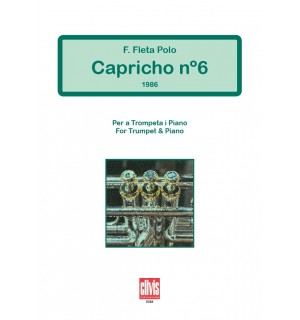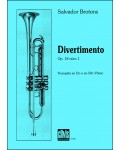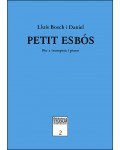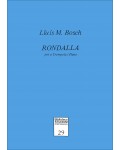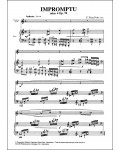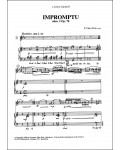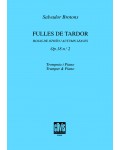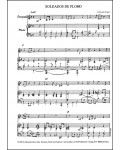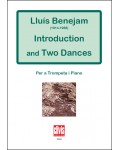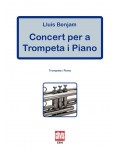
No products
Prices are tax included
Product successfully added to your shopping cart
There are 0 items in your cart. There is 1 item in your cart.
- English
- Castellano
- Català
Capricho núm. 6
E593
New product
The composer he does not limit himself to using the trumpet as a fanfare instrument; rather he makes use of all its resources. The piece, though not exceptionally difficult to play, is demanding at the chamber level. The piano part is optional: it reinforces the rhythmical element of the piece and can help to set tuning when the piece is played by advanced students.
| Period | 20th c. |
| Subheading / Parts | Trio per a 3 trompetes i piano (opcional) |
| Instruments | 3trba.pno. |
| Pages | 24 |
| Time | 7 min |
| Contents | score + parts |
| ISMN | 979-0-3502-0547-7 |
| Edition | Printed |
Francisco Fleta Polo is an author who writes idiomatically; that is, he has a perfect understanding of the instrument he is writing for, and asks for as much as it can give while at all times respecting the limitations of the instrument in question. Even when he transcribes, the scores become pieces in themselves, perfectly adapted to the new instrument: he doesn’t just transcribe the notes, but considers its character, tensions, breathing –the music– at all times. This respect for the material he works with has made his music very popular with the public and, more importantly, with musicians, who see in Fleta’s music the work of a composer who puts himself in the skin of the person who will be doing the playing.
In the case of Trio per a trompetes, his knowledge of the instrument is abundantly clear (remember than Fleta, besides completing higher studies in the violin and viola, also completed the same certificates in the trumpet) and he does not limit himself to using the trumpet as a fanfare instrument; rather he makes use of all its resources. The piece, though not exceptionally difficult to play, is demanding at the chamber level, and contains features unique to Fleta’s musical language in which free harmonies are combined with the constant presence of the rhythmic aspect, the dominance of classical forms (the central part of the piece being a canonic fugue), the use of all of the instrument’s resources (with sections in which a damper is used) and a certain amount of humour (for example, the use of frulatti at various points, and a strong finale). The piano part is optional: it reinforces the rhythmical element of the piece and can help to set tuning when the piece is played by advanced students.
The piece is dedicated to trumpet player Jaume Espigolé, a fellow teacher at the Municipal Superior Conservatory of Music of Barcelona.
David Puertas

